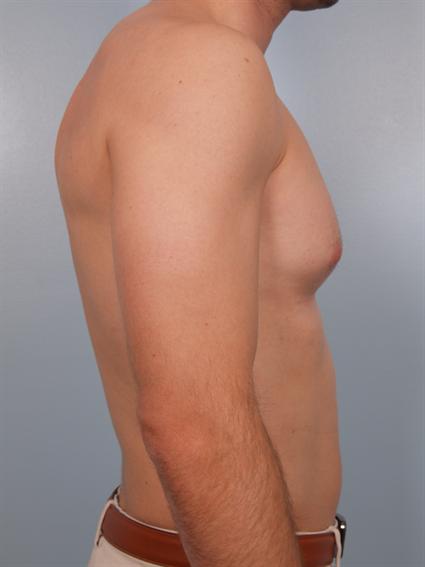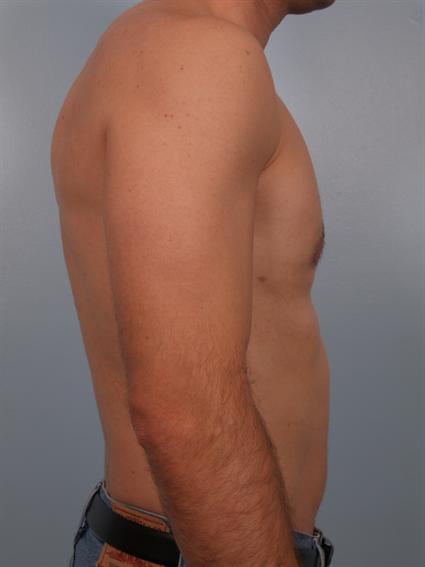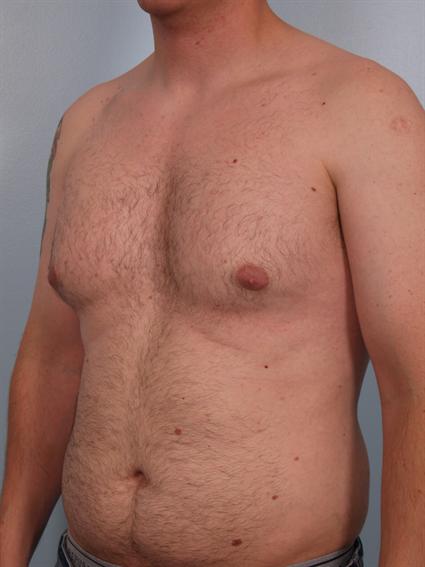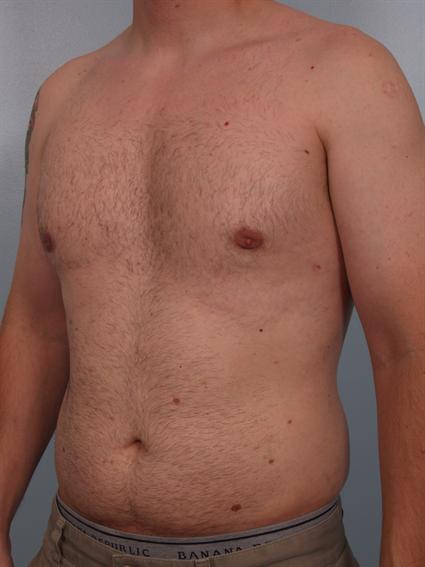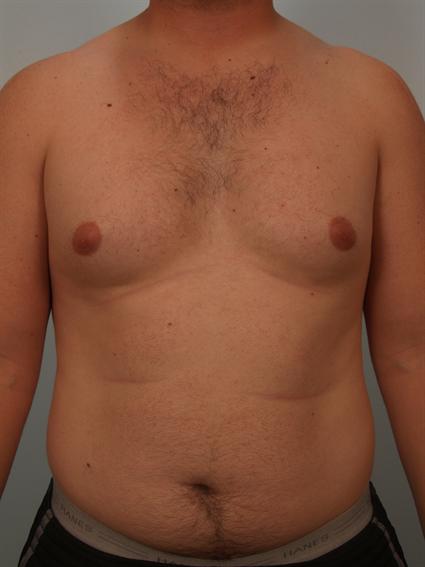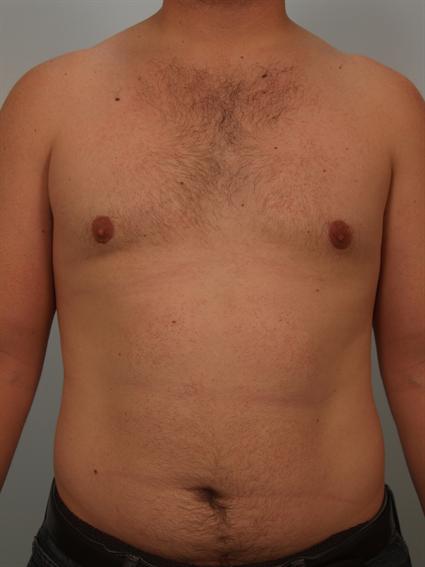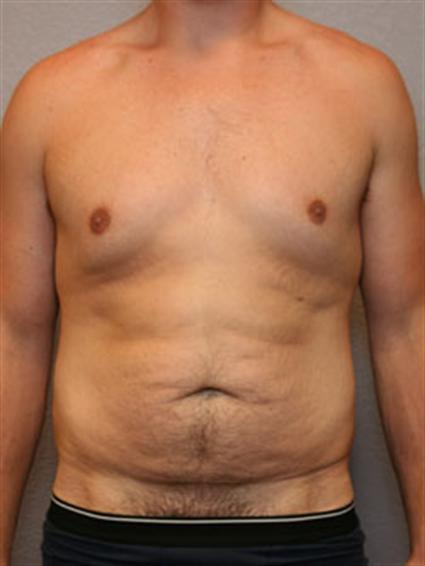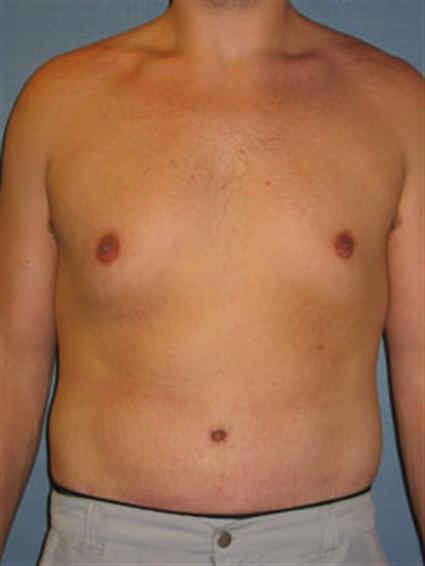Gynecomastia (Male Breast Reduction) Topics
Male Breast Reduction What is Gynecomastia?
Gynecomastia, or enlarged male breasts, is a common condition caused by an overgrowth of glandular or fatty tissue in the chest. At his Beverly Hills practice, board-certified plastic surgeon Dr. Robert Cohen performs male breast reduction surgery to restore a flatter, more masculine chest contour. This condition can develop due to hormonal changes, genetics, weight fluctuations, or certain medications, and often persists despite diet and exercise. Dr. Cohen customizes each treatment plan to address the specific cause, whether the excess tissue is glandular, fatty, or a combination of both, to achieve balanced, natural-looking results.
Using advanced surgical techniques, Dr. Cohen removes the unwanted tissue and reshapes the chest to improve definition, confidence, and comfort. His approach prioritizes precision, minimal scarring, and natural proportions that enhance the patient’s overall physique. In addition to treating gynecomastia in men, Dr. Cohen also performs breast reduction procedures for women, offering comprehensive expertise in chest contouring and aesthetic balance.
A life-changing procedure
Gynecomastia is a source of embarrassment and shame for many male patients, who are often teased for having a feminine-looking chest. Gynecomastia surgery can be life-changing for men, in fact, many patients say they wish they had sought help sooner.
If you find yourself struggling with this condition, Dr. Cohen would be very happy to discuss your options for a Beverly Hills gynecomastia correction surgery. Request a consultation or call the office to schedule an appointment.

What Causes Gynecomastia?
Gynecomastia is a condition characterized by the development of fibrous breast tissue, glandular ducts, and excess fat in the chest area, which can lead to a more feminine appearance. While men don’t have the same milk-producing lobules as women, they do have other types of breast tissue that can enlarge, contributing to the condition.
The primary cause of gynecomastia is a hormonal imbalance. When testosterone levels are low and estrogen levels are higher, it can lead to the development of excess breast tissue. This imbalance can occur during puberty, but it can also affect adult men due to factors like aging, medical conditions, or medications. In some cases, low testosterone levels or other underlying health issues like hypogonadism or liver disease can contribute to this condition.
Obesity is another common factor. Men who are overweight or have excess fat in the chest area may experience pseudo-gynecomastia, where fat accumulates beneath the nipples, creating a similar appearance to gynecomastia. In these cases, liposuction may be a solution to remove the excess fat.
However, for men with true gynecomastia, a more thorough surgical approach may be required to remove the excess breast tissue and restore a more masculine chest contour. For more information consult ASPS on the topic of Gynecomastia Surgery.
Why do men seek gynecomastia treatment in Beverly Hills?
Although some cases of gynecomastia can be attributed to hormonal imbalances or the use of steroids, the majority of these cases occur due to unknown causes.
Regardless of why gynecomastia occurs, the effects can be very upsetting. Many individuals are uncomfortable going shirtless at the pool or the beach, and many have developed poor posture in an attempt to hide their chests.
They also frequently wear extra shirts or clothes with thicker material to hide their chest, and sometimes even wear compression shirts to flatten what appear to be breasts.
Many patients report being reluctant to work out because building the chest muscle or losing weight can sometimes exacerbate the visibility of the excess glandular tissue.

Surgical Details for a Male Breast Reduction Procedure
Gynecomastia treatment in Beverly Hills generally addresses both the fatty and glandular tissue excess. Dr. Cohen will make a very small incision on the underside of the areola, right at the junction of the areola and the chest skin.
Through this incision, he will perform liposuction to remove the fat excess and to feather out the edges of the chest to achieve a smooth, natural transition to the thinner tissues.
He will also perform direct glandular tissue removal though the areolar incision, because glandular tissue is too dense to be removed with liposuction. With this technique, he is able to change a pointy chest into a squared, masculine chest.
For some patients, the areola is a problem area as well. In certain cases, if excising the excess fat and glandular tissue from behind the areola is not enough to improve the appearance, a “nipple lift” or circumareolar mastopexy (tightening around the areola) can be performed to reduce the areola size and make it less “puffy” in appearance.
Gynecomastia FAQs (Frequently Asked Questions)
Who is a good candidate for male breast reduction?
Ideal candidates are healthy men who struggle with persistent chest fullness despite maintaining a stable weight. Non-smokers and those without underlying medical conditions that affect healing generally experience the best results.
What can I expect during recovery after gynecomastia surgery?
Most patients return to work and light activity within a week. Swelling and bruising gradually subside over several weeks, and compression garments are worn to support the healing process and optimize results.
Will there be visible scars after surgery?
Dr. Cohen places incisions in discreet areas, such as around the edge of the areola or within the natural chest contours. Over time, these scars typically fade and become minimally noticeable.
Are gynecomastia results permanent?
Yes, the results of male breast reduction are generally long-lasting. Maintaining a stable weight and healthy lifestyle helps prevent new fat accumulation or hormonal fluctuations that could affect the chest.
Is gynecomastia dangerous?
In most cases, gynecomastia is not dangerous. It is typically caused by a hormonal imbalance or excess fat. While the condition itself doesn’t pose a health risk, it can affect self-esteem and cause discomfort. If you notice sudden changes or pain, consult a healthcare provider to rule out underlying issues.
How much does male breast reduction cost in Beverly Hills?
The cost of gynecomastia surgery varies depending on the complexity of the case and whether liposuction or excision is required. During your consultation, Dr. Cohen will provide a detailed quote based on your personalized treatment plan.
Can working out or losing weight get rid of gynecomastia?
In some cases, exercise and fat loss can reduce the appearance of enlarged breasts if the issue is primarily fatty tissue. However, true gynecomastia involves glandular tissue that does not respond to diet or exercise. In these situations, surgery is the only effective solution for a flat, contoured chest.
Does gynecomastia come back after surgery?
Recurrence is rare, but it can happen if the underlying cause—such as hormonal imbalance, steroid use, or certain medications—persists. Dr. Cohen evaluates each patient’s medical history to help minimize the risk of recurrence after surgery.
What is the difference between gynecomastia and pseudogynecomastia?
Gynecomastia is caused by glandular tissue growth, while pseudogynecomastia is due to fat accumulation without glandular enlargement. During your consultation, Dr. Cohen determines which type you have and tailors your treatment accordingly.
Can liposuction alone correct gynecomastia?
If the enlarged chest is mostly due to fatty tissue, liposuction alone may be enough. However, when glandular tissue is present, surgical excision is required for complete correction. Dr. Cohen often combines both methods for the most natural and defined results.
How soon can I return to the gym after male breast reduction?
Light exercise can typically resume after 2 to 3 weeks, while more intense workouts—especially chest exercises—should be avoided for about 4 to 6 weeks. Dr. Cohen provides detailed post-operative instructions to ensure proper healing and lasting results.

